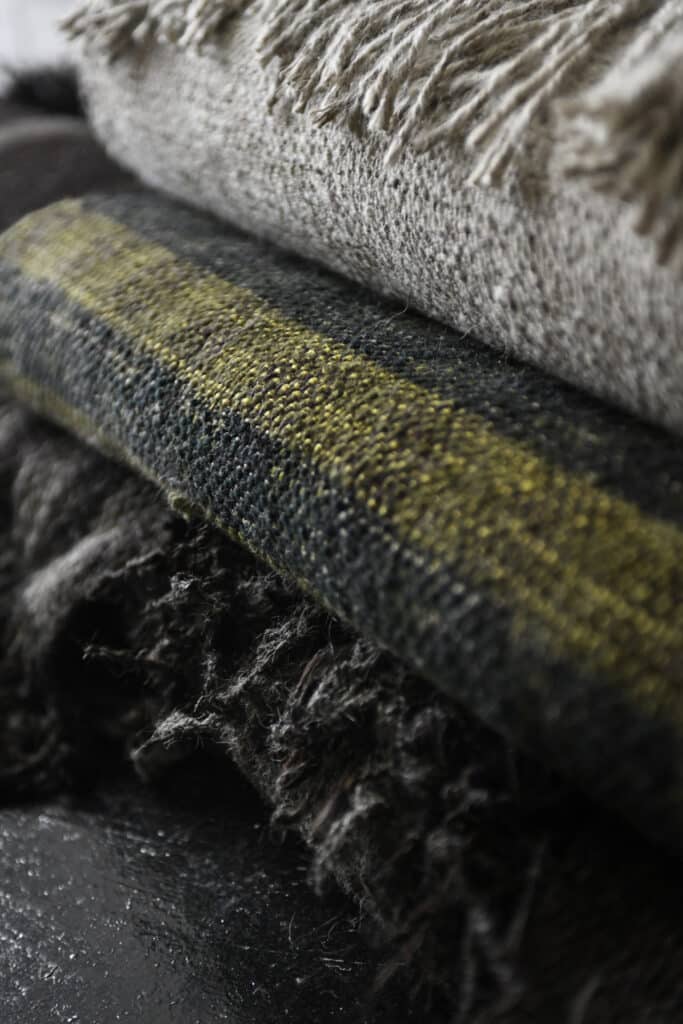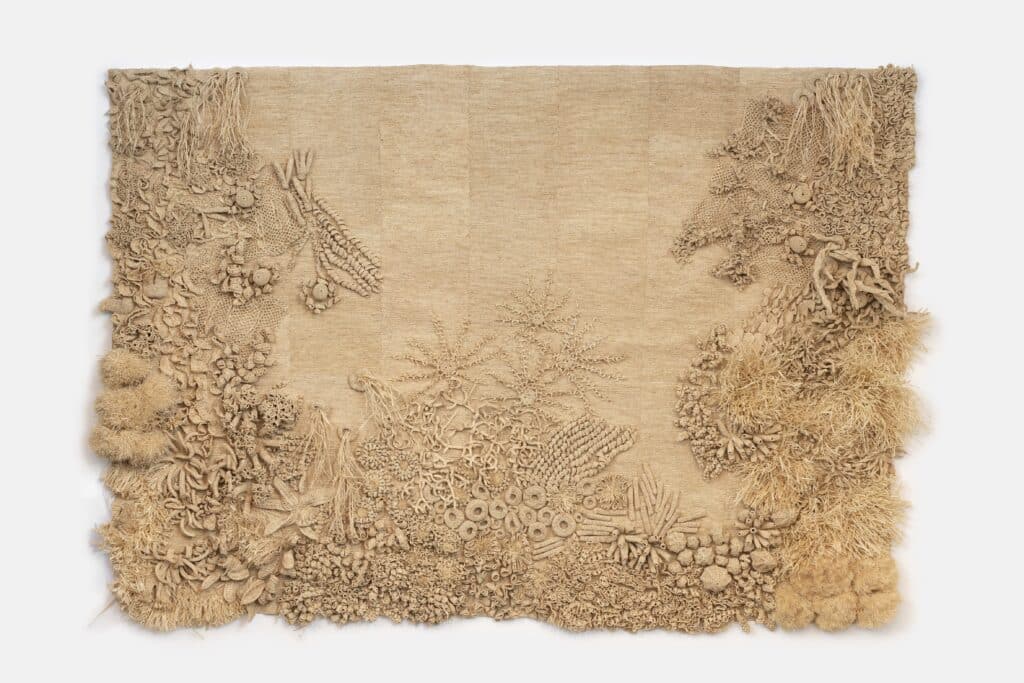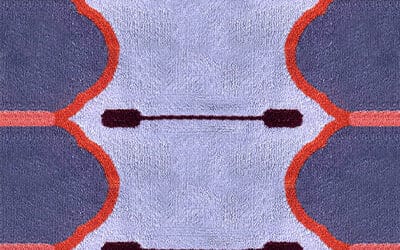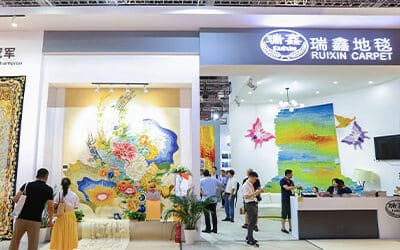The Story section of COVER 69 focused on sustainable design. Here we feature our interview with Trend analyst and consultant Philip Fimmano, which looks at the application of sustainability in the design world today.

THERE IS A GREAT DEAL OF DIALOGUE CONCERNING CRAFTS AND SUSTAINABILITY, BUT DO YOU THINK CONSUMERS ARE STARTING TO PURCHASE PRODUCTS WITH THIS IN MIND? IS THERE MORE OF A FOCUS ON WELLNESS THAN ECOLOGY?
Absolutely: conscious consumers are first and foremost interested in craft, sustainability and materials. Ecology remains important to them during a period when climate change urgently needs to be first on all agendas. If anything, wellness has been integrated into everyday life by now and is less of a concern—replaced by a young generation that sees mental health and environmental responsibility as the new well-being.
ARE PEOPLE DRIVEN AWAY FROM ECO PRODUCTS BY PRICE? WHILE ‘SLOW DESIGN’ WILL ALWAYS NECESSITATE HIGHER PRICES, DOES SUSTAINABLE DESIGN ALWAYS HAVE TO COST MUCH MORE?
It depends on the market and price point, but in general ecological products do incur slightly higher costs and therefore an investment on behalf of both the manufacturer and the consumer is required. However, sustainable design does not always need to cost more; for example, sometimes saving a lot on raw materials by using upcycled resources is balanced by spending more on manpower; yet the total still works out as less costly than making the same products from new materials.
Sustainable style and longevity also equal savings in the long run, and this should be an obvious lesson learnt by both the interior and fashion industries. In the current climate, rising transport and material costs are hindering consumers and so alternative business models need to be implemented and improvised, sometimes skipping a step if necessary, in order to keep things affordable for the general public.
TEXTILES ARE SUCH A SOULFUL PRODUCT DONE WELL, BUT MADE BADLY THEY ARE ONE OF THE BIGGEST POLLUTERS. HOW EASY IS IT TO READDRESS THIS?
It is a complex issue that involves many players. From the manufacturing perspective, whereas designers and textile buyers may wish to invest in quality materials, other departments in the same company impose strict cost guidelines that leave little room for sustainability and durability. So, this commercial system of profits over people and the planet, of shareholder bonuses over sustainable choices, needs to be broken and rethought.
Consumers also need to relearn the real value of materials, quality and longevity; to solve this problem we need to call on governments and international bodies to impose new guidelines within economic communities as they do in the food industry, with minimum prices for certain goods, and taxes on products that do not meet sustainable standards.
Whether it is the fashion industry, the textile trade or interior products, all brands need to focus on producing less each year while finding alternative solutions to maintain the same profits, and this includes selling off old stock before it becomes landfill. Companies need to take responsibility for their own waste, including buying back end-of-life consumer products, and they must stop the catastrophic dumping of Western textile waste in Africa and Asia. Companies need to set 2030 targets today and aim to achieve them before that deadline; if not, we are headed for an unprecedented global crisis that will affect everyone on the planet far, far more than the current pandemic and recession.

IS THERE ENOUGH TEACHING THAT PUSHES DESIGN STUDENTS INTO NEW THINKING AND NOVEL WAYS OF DEALING WITH WASTE?
Many schools now include circularity in their curriculums. However it is nowhere near enough to transform the design sectors. The admission process at most institutions favours income over ecological intellect or sustainable morals, so such places are not necessarily setting a good example.
At Polimoda [the fashion school in Florence], Li Edelkoort and I have designed a textile masters course that takes a radically different approach by understanding the true value of textiles and resources. Students start their twoyear journey by learning about the essence of yarns and fibre farming, something that is unique to our programme. They are taught by sustainable industry leaders from around the globe, including regenerative farmers, dyers and spinners, sometimes travelling to remote farms and regions where exemplary ecosystems are in practice. Students then progress to weave, knit, felt, print and embellish textiles with soul, before creating more finalised pieces in their final semester. Throughout the masters, they also study the history, archaeology and anthropology of textiles in order to acquire a deeper understanding of ‘textiles as culture’, another unique aspect of our innovative course.
We are not only creating sustainable textile designers and fashion designers, we also hope that graduates will go into the industry as textile thinkers to disrupt and overhaul the way things are done. Simultaneously, they will slow certain things down while speeding other things up!
DO YOU SEE MANY DESIGN AND FASHION COMPANIES MOVING AWAY FROM THE IDEA OF CONSTANTLY CHURNING OUT NEW PRODUCTS?
There are many great examples of companies doing better, or, as Li Edelkoort says, creating ‘goods that are good’. In the home space, Muji is perhaps the perennial example of moderately priced items that have longevity, forgoing the need to release new products on a regular basis.
Design weeks globally need to heed this message and not give in to the pressures of releasing new products year after year. In the fashion sector, Eileen Fisher and Patagonia lead the way with ambitious sustainability targets, natural resource conservation, buyback schemes and recycling initiatives, while also encouraging their customers to consume less. The definition of success in the future will be how to produce much less while maintaining the same workforce and income streams. Growth for growth’s sake is totally old-fashioned and unsustainable.

WE ALL NOW THINK IN GLOBAL TERMS, BUT DO YOU THINK THAT COMMUNITY AND LOCAL PRODUCE IS BECOMING MORE OF A FOCUS?
There are many small companies and collectives involved in that side of the green movement and, when gathered together, their combined forces have become very powerful—and the common language no longer needs to be English. One sustainable example is LUM by Studio Daniel Costa, working in Nepal, using yak and nettle fibres for rugs and textile accessories. Niche products such as Costa’s are sold globally while maintaining a long-term relationship with distant artisan communities that are sustainably farming their fibres.
The way artisanal textiles are sold is also changing, with consumers interested in learning at the same time as collecting their products. The International Folk Art Market in Santa Fe and XTANT in Mallorca are just two of these new and immersive formats for shopping while also meeting the makers.
WHICH BRANDS OR DESIGNERS DO YOU SEE IMPORTANT IN THE SUSTAINABILITY MOVEMENT?
In interiors, large corporations such as Mohawk Group and Interface lead the flooring industry by implementing vast sustainability regimens. Fashion has many inspiring players too: Re;code in Korea and Atelier & Repairs in California are just two brands innovating the fashion world by designing the most creative garments out of recycled materials. We also must learn from indigenous knowledge and craft communities that follow centuries-old sustainability practices.
FOR THE TEXTILES OF THE FUTURE SHOULD WE LOOK TO SMART FABRICS OR BACK TO TRADITIONAL METHODS?
There’s a lot of innovation being invested in as far as vegan leathers and ecological fibres are concerned, and we shall see if these big ideas come to fruition in our lifetime. Textile technologies, however, are thousands of years old, and traditional techniques offer smart solutions of their own, especially when combined with upcycled resources or cottageindustry volumes.
Consumers in the future will appreciate hybrids between craft and technology, but I believe it is only through traditional and indigenous knowledge that a sustainable future will be revealed.




